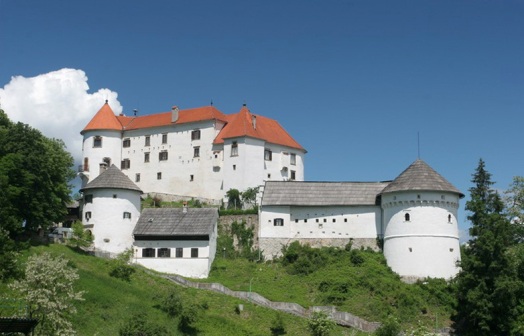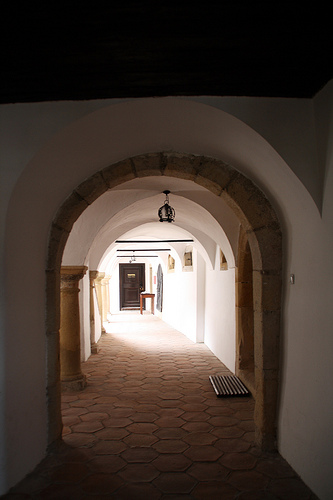

Location: Velenje Map
Constructed: 1270 by Kunšperk family


Velenje Castle is a medieval fortress situated in Velenje in Šalek Valley in the Northern Slovenia. Velenje Castle was constructed in 1270 by Kunšperk family. In the early 16th century it was reconstructed by the Wagen von Wagensberg family who gave it more of the Renaissance appearance of a private residence rather than a military citadel. In the 19th century it was owned by Karl and Bianca Adamovich. In the early 20th century it was a summer retreat of Count Coronnini- Kromberg, but in 1943 he was evicted by the German forces that conquered the country. After Red Army liberated castle it became a property of the government. Today it houses a museum of art, culture and history of the castle.
The Velenje Castle lies on a steep rocky cliff,
about 60 m higher than the town of Velenje , ie altogether about 450
m above sea level. It is one of the best preserved castles in
Slovenia and one of ten castles that existed in the Salek Valley in
the Middle Ages. It is about 700 years old: it is first mentioned in
1270. It is a typical military-residential fort whose floor plan
adapts to the terrain on which it stands. Over the centuries, the
castle was changed and upgraded several times, and today the image
of the Renaissance mansion - palacia was given in the 16th century.
The mighty rondell in the southeast part of the castle complex is
completely renaissance. It is stylistically and temporally defined
by Renaissance windows on the first floor, a prominent stone wreath,
typically shaped resin moldings and typical rectangular lines or
arrows. The windows are exactly the same shape as the ones on the
roundabout, found on the courtyard of the southern tract. A typical
profile shown by Renaissance windows also has a portal in the
entrance tower.
To a lesser extent, then, Velenje Castle changed its image until the
18th century. Unfortunately, very little was retained from the
interior design, but its architectural appearance was completely
preserved, with the exception of the drawbridge, which was removed
in the mid-19th century.
In the 17th century, rebellious peasants conquered, looted and
destroyed almost all castles in the Salek Valley, including the Turn
Castle near Velenje , Šoštanj and Šalek . Velenje Castle, however,
successfully defended itself with its servants, as it was the best
protected and fortified among all castles in the Salek Valley. We
also have a report from this century on the two-time attack by the
Turks on the castle. The attackers were not successful in doing so,
only settling down.
Velenje Museum
After World War II, the castle became state property. Originally,
there were mining flats, but in 1957 it began to gradually be
converted into a museum . Originally, the castle housed the Museum
of the Slovenian Coal Mines, which was later renamed the Velenje
Museum due to its broader scope of activity , and the Coal Museum
Collection was transferred to the abandoned coal mine of the Velenje
Coal Mine to form the Slovenian Coal Mining Museum .